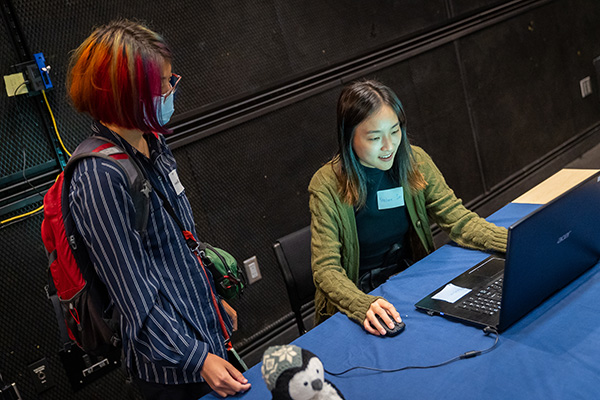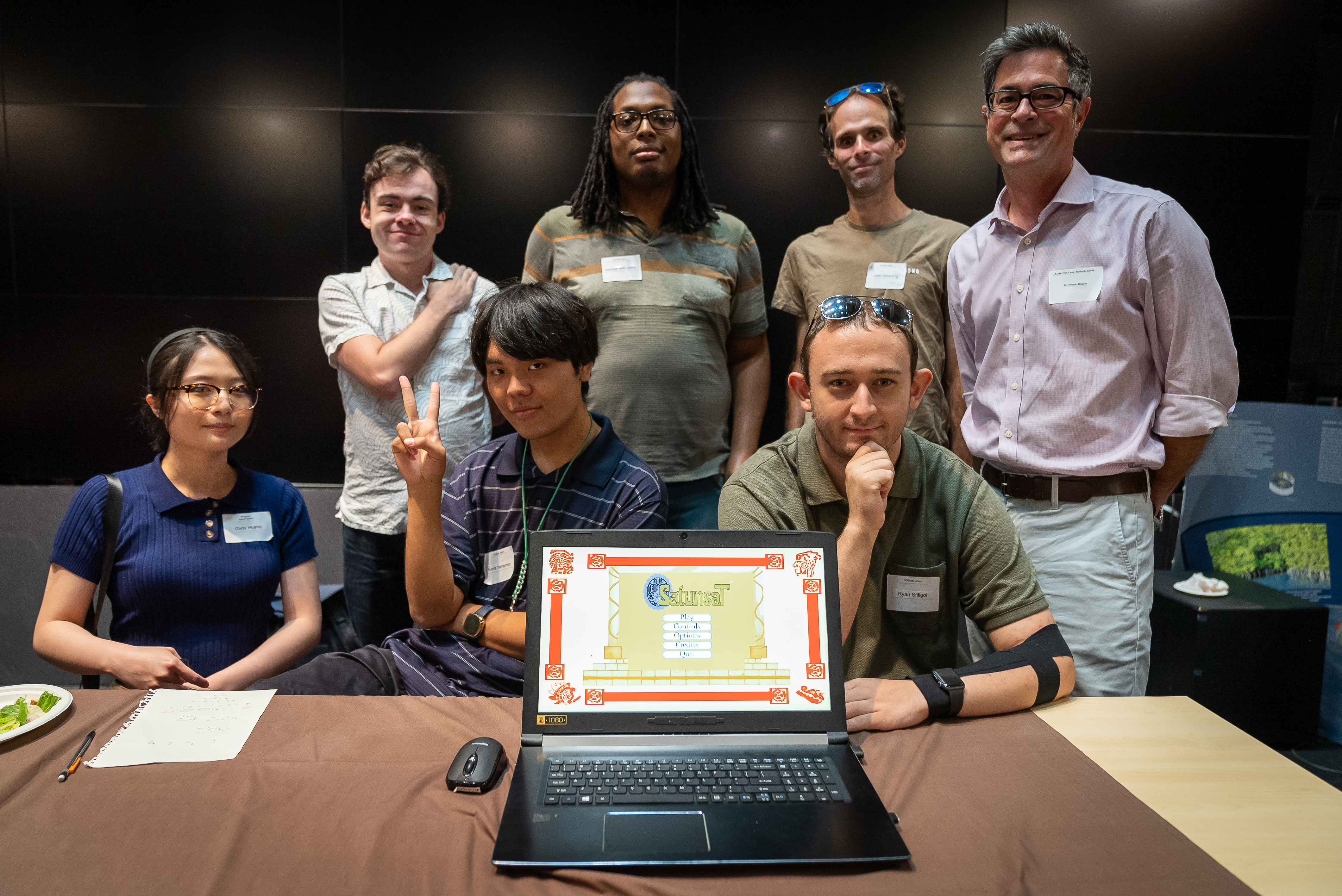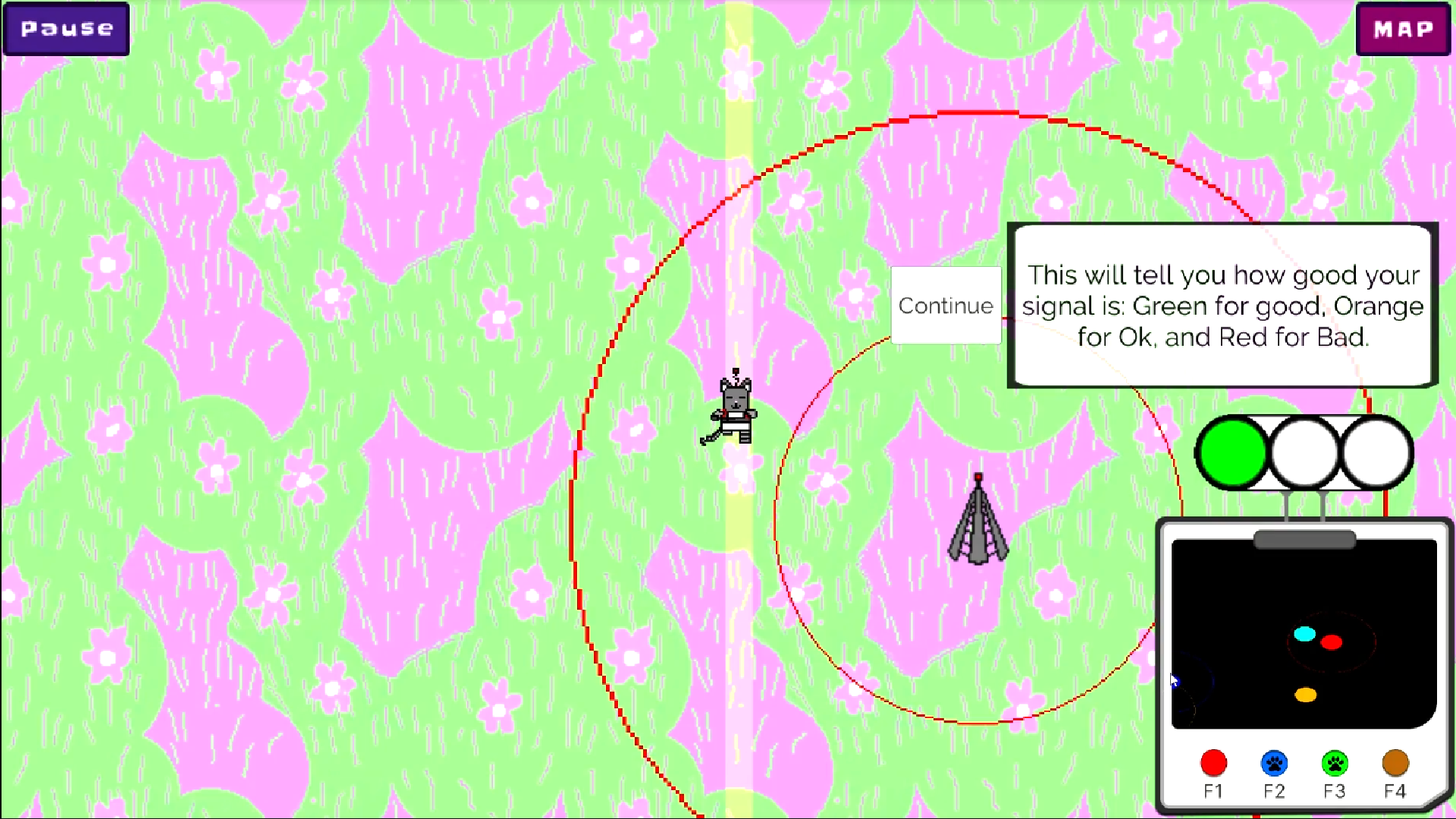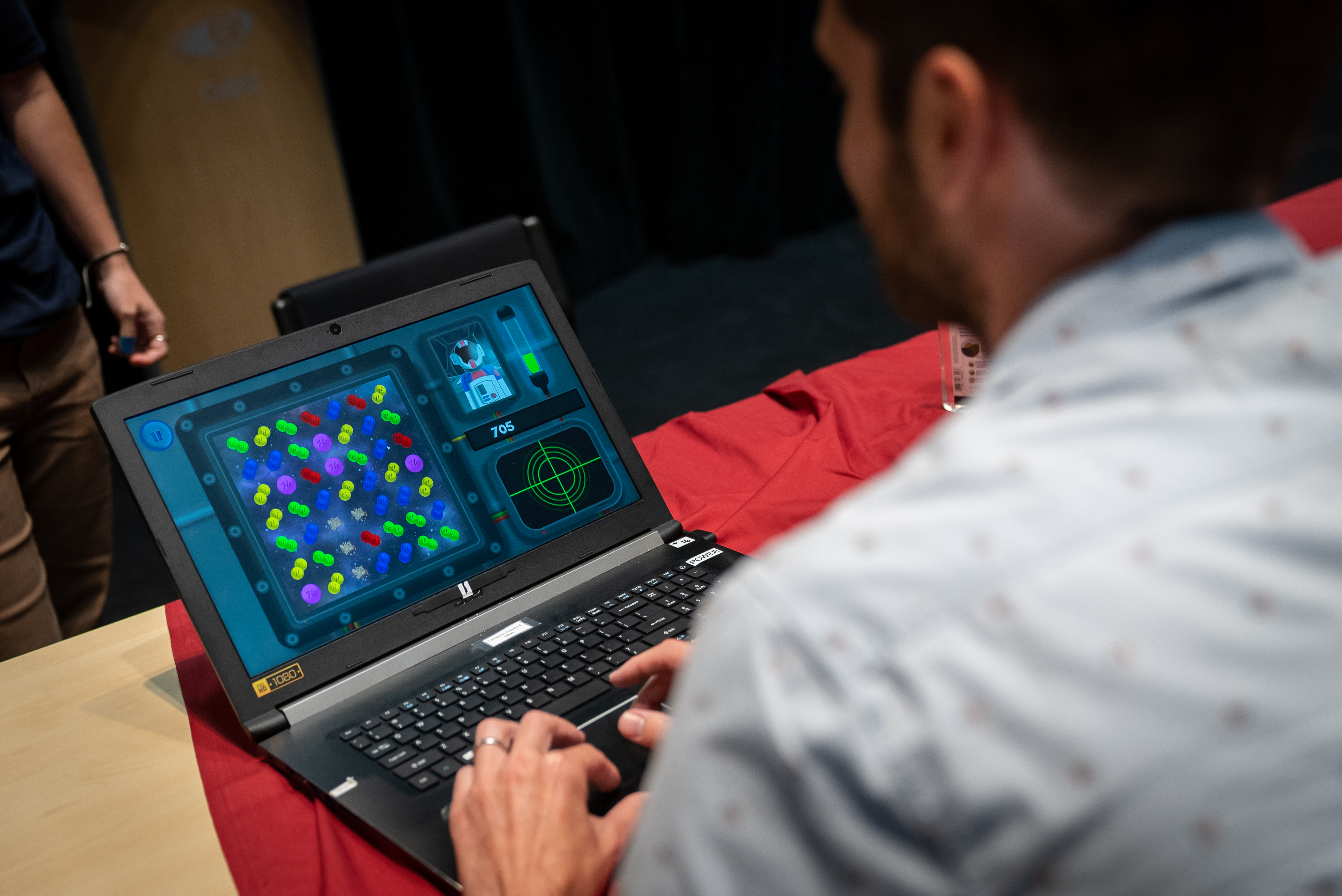QI Internship Provides Pathway to Workplace for Neurodiverse Youth
September 15, 2022 / By Xochitl Rojas-Rocha

This summer, 16 young adults from around the U.S., including students at UC San Diego, gathered at the Qualcomm Institute (QI) to create educational and research-based video games in QI’s NeuroDiversity in Tech internship. The program creates a pathway for young adults with autism spectrum disorder to gain valuable workplace training and prepare for a successful career in technology.
“This is something I’m so passionate about,” said Pamela Cosman, director of the NeuroDiversity in Tech internship program and a professor of Electrical and Computer Engineering with the UC San Diego Jacobs School of Engineering. “There is a gap with neurodivergent young adults who have the skills and cognitive abilities to be productive in the tech workforce, but who face hurdles obtaining jobs and experience very high unemployment. We need programs that offer the hard and soft skills to bridge the gap from both sides of employee and employer.”
During this year’s eight-week summer program—the first held in-person since the COVID-19 pandemic—the interns, most of whom are on the spectrum, worked to develop interactive games showcasing a scientific or research concept. Each team had a dedicated coach, who provided both technical help and behavioral coaching, and faculty and professional mentors, including employees of the video game company Ubisoft.
As in a workplace scenario, each team of interns included a project manager, artist, designer, sound designer and programmers, all working together to deliver a final product to a client. This year’s cohort tackled topics as varied as the birth of stars and the concept of radio interference.
Explore the Labyrinth at Oxkintok
For one team, the assignment began with a vast 3D data set of an ancient Maya labyrinth at the Oxkintok archaeological site on Mexico’s Yucatán Peninsula. In 2016, QI Research Scientist Dominique Rissolo and other members of the Cultural Heritage Engineering Initiative at QI were part of an international team that traveled to Oxkintok to collect spatial data on the labyrinth, also known as Satunsat.
Rissolo asked the team to use these data points to create an adventure game exploring themes of archaeoastronomy, Maya creation myths and hieroglyphic writing. Aside from requesting that the game incorporate tasks that would help the player advance through the labyrinth, however, he left the design and gameplay up to the team.

The final game, available here, places the player in the heart of Satunsat. The player navigates by torchlight through dark tunnels, advancing by solving puzzles using the Maya calendar and number system. The game rewards each victory with a “fun fact” about Maya culture.
Michael Billingsley, a recent graduate of San Diego State University studying multimedia art who acted as his team’s artist, said that he and his teammates—project manager Ryan Sfiligoi, designer Logan Wayman, programmers Kenta Yamamoto and Juan Groening, as well as Theodore Gigstad, sound designer for all three groups—dove into Maya architecture and aesthetics to decide on the game’s look and feel. Culture is woven into the game’s environment, music and even its font, which Billingsley says is inspired by popular motifs in Maya art.
“Through the team’s creative vision for the game, I saw the labyrinth of Satunsat in a new light—literally,” said Rissolo. “I had been so focused on illuminating this dark maze in our 3D models—to better examine ancient masonry techniques, for example—that I hadn’t really reflected on what the tunnels would have looked like to Maya visitors winding their way through the building so long ago. The torch the interns created in the game, the flickering light and darting shadows, was revelatory.”
From the Labyrinth to Space
Somewhere in the far reaches of space, a friendly cat in an astronaut suit is making its rounds, bringing food and snacks to customers in need. The only obstacles along its path are the strategically placed radio towers that distort incoming orders with signal interference.
To advance the cat to the next level, players of the game “Interfurence” must act quickly to find a radio frequency that allows them to hear the customer’s order clearly and make the correct delivery. The gameplay offers a fun, interactive way for elementary and middle school students to engage with the concepts of frequency bands and radio interference.
Although the final game runs smoothly, the team of interns, including project manager Girish Subburaman, designer Kieran Solik, artist Natalie Waltz and programmers Andrea Kang and Shawn Joseph Porto, got to experience what it was like to work under a tight deadline while pivoting to meet client expectations and overcome hurdles. Their coach was Corly Huang, ’21 Department of Visual Arts, who also oversaw the Labyrinth team.

When the interns received their assignment, their client, the non-profit organization BSCS Science Learning, left the door open to changes but suggested that the interns might create a game in which the central character had the option of traveling different routes and switching frequency bands to receive secret code transmissions in a military or historical setting. The Interfurence team won the client over with an alternate storyline that might better appeal to a young audience: that of a space-suited food delivery cat.
“Everyone I met on the team has been wonderful,” said Kang, a master’s student studying computer engineering at UC San Diego. “I’ve learned a lot in terms of team building and working in a more collaborative environment.”
Gamifying the Life Cycles of Stars
Aaron Drews, associate teaching professor in the UC San Diego Jacobs School NanoEngineering Department, came to the NeuroDiversity in Tech program with a years-old idea for a game. He wanted the interns to create a tile-matching game, similar to the popular and addictive “Bejeweled” or “PuzzleQuest,” to illustrate the life cycles of stars.
The intern team, comprised of project manager Daniel Smalley, artist Clare Hidalgo, designer Em Findlay and programmers Jackson Singley and Alejandro Gomez, found themselves with the challenge of lending a complex process like the formation or death of a star to the game’s format. They crafted a narrative in which the user plays as an astronaut who receives transmissions from a mysterious figure requesting help in creating new stars.

“Star Swap” invites the player to match color-coded elements essential to star formation, including helium and hydrogen, in patterns of three or more to gain points and clear the board. Elements like carbon, which remain inert, create blocks that the player can eliminate with power ups before they lock the screen. Once the user gains enough points, the mystery figure reveals itself as a supernova that requests aid in completing the final stages of its life cycle.
Findlay, a speculative design major in the UC San Diego Department of Visual Arts, came into the game with less than a year of formal education in art. In their role as the team’s designer, they were responsible for learning the code to program cut scenes, creating concept art and writing the game’s script. Easing the process of learning to program and streamlining the storyline and dialogue were the team’s student mentor, Trent Simmons, and Ubisoft contact Lena Verstappen, whose credentials include contributions to Pokémon Go.
Findlay grew up playing classic arcade games and other video games with accessible and easy-to-use controls. As a person with a partially paralyzed left arm, their experience has influenced the change they’d like to see in the video game industry.
“I was four classes away from graduating [on a premedical track] when I realized I really didn’t want to be a doctor anymore,” said Findlay. “I was excited to take this opportunity to jump headfirst into what I wanted to do with my life. This internship helped me realize I was on the right path.”
Workforce Development at QI
The NeuroDiversity in Tech internship program, established in 2018, currently receives support through the National Science Foundation (NSF) Future of Work program, as well as State of California funds dedicated to QI’s workforce development programs.
As part of the NSF grant, Cosman and other UC San Diego researchers are also testing tools to prepare neurodivergent young adults for the workforce, including a mock job interview in virtual reality to assess focus and eye contact in adults on the spectrum.
The NeuroDiversity in Tech program accepts applications annually in the spring from any neurodivergent young adult seeking employment or experience in video game development. For more information, see https://qi.ucsd.edu/neurodiversity-summer-internship.php.
Media Contacts
Xochitl Rojas-Rocha
xrojasrocha@eng.ucsd.edu

